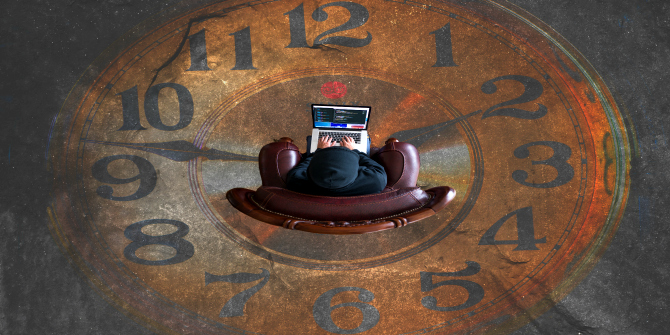 Athene Donald ask why we artificially divide the world between that which is considered scientific and that which is considered culture? The two spheres are increasingly isolated from each other and the media consistently reinforce this division. The dialogue between science and culture, and indeed scientists and non-scientists, should be ongoing and properly integrated.
Athene Donald ask why we artificially divide the world between that which is considered scientific and that which is considered culture? The two spheres are increasingly isolated from each other and the media consistently reinforce this division. The dialogue between science and culture, and indeed scientists and non-scientists, should be ongoing and properly integrated.
People seem to think that science and culture are two different things. Just as Stefan Collini, in his 2012 book ‘What are Universities for? ’ constantly referred to scientists and scholars, as if scientists were unable to join the (implied elite) club of scholars, culture as usually considered consists of things like music, art, poetry and literature– but not science. Why? Why this artificial distinction (which I highlighted before) which, if you go down the well-worked Two Cultures route suggests that science/technology may have its own culture but it is ‘other’. It really is time that we recognized learning is learning, with many hues, styles and flavours, but that all academics are in the business of scholarship, of making the world a better place and being creative together.
How is culture defined? Having just read Matthew Arnold’s Culture and Anarchy I wouldn’t turn there for a helpful definition in the modern world, however ground-breaking the book may have been upon its appearance in 1869. Arnold was determined to prove that the classical Hellenic world had it all right and those of us steeped in what he calls ‘machinery’ have it all wrong, although by machinery he doesn’t mean a vacuum cleaner or car, or even – to be less anachronistic – a powerloom or steam engine. He means the machinery of doing something, be it challenging the law (he was very worked up about the disestablishment of the Irish Church and that ‘annual blister, marriage with deceased wife’s sister) or improving the lot of the poor (The Populace in his language). But let me not dwell on this seminal but, at least to my mind, outmoded and ill-argued book to make sense of culture.
 Image credit: Sherrie Thai (Flickr) CC BY
Image credit: Sherrie Thai (Flickr) CC BY
It was Melvyn Bragg, on his Radio 4 programme In Our Time, who introduced Arnold’s book to me, through his series about Culture broadcast in 2012. And Melvyn Bragg it is who has indirectly just brought back to my mind the artificial division between culture and science by inviting me back onto that wonderful, broad, intellectual programme he chairs. Along with the historian of science, Jim Bennett, and the UCL chemist Paul McMillan, we discussed the Science of Glass this week. This was a programme that I would like to think I had stimulated in some small part when I previously took part in the programme covering the topic of States of Matter. After that earlier programme I mourned the fact the topic was too large to do justice to all the intriguing but less than conventional states and, in particular, that we had never touched on glasses at all. Indeed I wrote to the producer to say this. So in this programme we did. What I really liked about the line-up was that this time, unlike on my previous two appearances, we were not three scientists. Jim’s presence meant we had a broader view of things, particularly with regard to the historical context in which glass has been developed and utilised.
Such public dialogue between those with very different takes on a specific subject, are all too rare. Indeed, space and opportunity for such a public dialogue to occur are also all too rare. There is a tendency to ghetto-ise disciplines: Science Festivals and Literary Festivals do not usually co-mingle (although the Hay Festival does include a good line up of scientists) and speakers from one background may either lack confidence to speak in other arenas and/or may not get invited. This is not healthy.
If culture is to mean anything it should mean ‘the best that has been thought and known’ as Arnold would have it, but without taking a large part of our knowledge and implicitly saying that since it’s science it can’t count as culture, even if it has been ‘thought and known’. Why do we artificially divide the world so that it isn’t common to wish to be competent (I’m not aiming for a higher goal of expertise) in more than one sphere? Of course there are notable and visible exceptions, someone like Jonathan Miller, for instance. But scientists too often are diffident ( admittedly sometimes with good reason) about expressing their views about topics beyond their own specific fields. Yet why shouldn’t scientists express interest and knowledge about books or music, at least in a lay sense? Scientists are not Philistines (a word that, in this context, is also down to Arnold I believe) and their opinions are worth hearing. If music (jazz, perhaps, hence the title of this post) inspires them to be creative in their science, can they articulate why? And if science inspires artists, that too should be a cause for celebration. As examples of this latter I would cite the dress Matthew Hubble designed for the Nobel Prize winner May Britt Moser, or the Wonderland collaboration between fashion designer Helen Storey and chemist Tony Ryan.
The media doesn’t do much to facilitate such dialogue across this apparent divide. I fear this is because by and large the media is dominated by non-scientists who seem to feel science is ‘difficult’ and can’t be incorporated into programmes in general, but has to be hived off into programmes labelled SCIENCE in metaphorically large letters, so that people who don’t want accidentally to be introduced to any can safely avoid being tainted by this dangerous concept. I exaggerate, but nevertheless we have programming on TV and then we have science programmes. However excellent these programmes may be there is the danger of reinforcing the prejudice that science is ‘other’ by operating in this way.
Some of the problem may lie in the distinction that isn’t always made between Public Engagement with Science and Public Understanding of Science. The latter – perhaps involving talking heads standing up at a science festival expounding excitedly about some gee-whizz discovery, probably their own – is important. Facts are sacred and should be transmitted. But the engagement side is also important; not in the sense of getting one’s hands dirty with demos, but in the sense of actively finding out about developing ideas and, if need be, then questioning what is going on. Hilary Sutcliffe, for one (and I’m sure there are many others) gets exercised when someone implies that only scientists should be allowed to comment on science. And she is right. When it comes to issues such as the ever-bubbling discussion over GMO’s or the recent exemplary consultations over ‘3 parent babies’, the voice of more than just scientists must be heard in a democracy. But if the only time such interactions occur are when there is a danger of polarisation of views (e.g. implicitly assuming that scientists are pro some new technology, the rest of the world against) then it won’t be helpful. The dialogue should be ongoing and properly integrated so that it is just people talking about things that interest or affect them.
Culture needs to incorporate all the best things that have been thought and written, including science. Not what Arnold meant, but it should be our aspiration.
This piece originally appeared on the author’s personal blog and is reposted with permission.
Note: This article gives the views of the author, and not the position of the Impact of Social Science blog, nor of the London School of Economics. Please review our Comments Policy if you have any concerns on posting a comment below.
About the Author
Athene Donald is Professor of Experimental Physics at Cavendish Laboratory at the University of Cambridge. Athene has been at Cavendish since 1983, and became a professor in 1998. Her activity sits within the sector of Biological and Soft Systems, and focusses on using the ideas of soft matter physics to study a wide range of systems of both synthetic and biological origin.







It’s ironic that Arnold’s classic was introduced to somebody of Athene Donald’s stature as late as 2012. This – i.e., a British master physicist’s ignorance of the book for most of her lifetime – is in itself a sign of the wide gap between ‘science’ and ‘culture’…